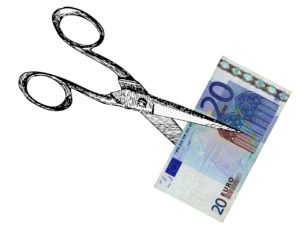
I have often said that the text of your business plan is more important than the numbers. By this I meant that without a great and distinctive strategy, no attention to your budgets is going to turn your company into a great business. However, the numbers are important too! Very important.
I believe that you can manage your numbers to radically increase your profitability. How? Well you can start by setting a profit percentage goal. Some people say small increases are achievable. Well that might be true.
But to get me excited and motivated, I need a big ramp up. A nice juicy target. For example, if my profits were currently 12.3% of sales, I might set my profit target for 25%! Sounds crazy, but suppose you could achieve it! Wouldn’t that be awesome! Wouldn’t it also be worth a lot of effort to do so?
After I set my big fat profit goal, then I break down targets. I pull out recent budgets and actual income statements and from there decide what my cost goal is for each major category. If I want to move my overall profit goal from 12.3% to 25%, then I would need to cut 12.2% (of sales) in expenses.
Then I would assign a certain percentage to cut in each major expense category. In my initial pass, I would come up with a percentage that seemed achievable and that added up to that 12.2% reduction that I targeted.
Then I would go into each expense category, and with as detailed an income statement as possible, examine every single line to help determine which items could be cut and by how much.
To be fair, if you are really trying to radically increase your profitability, you need to spend some time and energy at this. You will also need to make some sacrifices and make some trade offs and take some risks. Maybe you decide you have to cut out free gourmet coffee for your staff? Maybe you decide you need to move to a smaller or less prestigious office?
One thing I would not do is target the cuts evenly across the board. I also would be careful of cutting costs such as cost of goods sold, that would directly lower product or service quality significantly. However, I would at least think about cutting the cost of goods sold.
For example, in my book publishing business we were hit with an across the industry hike in the cost of paper, a very large cost item for us. Rather than just “eat” the price increase, we instead decided to go with a much lighter and much cheaper paper. We saved a ton of money and yet our customers didn’t seem to mind-our sales remained strong.
Now when I say I would go into each expense category I am not kidding about each and every one. In business school, one of my friends had a saying “There is no such thing as a fixed cost.” I agree. Every cost can be brought down. For example, take electricity. Might seem like an unavoidable expense. But is it really? Is every single light turned out at night? Could you use more efficient light bulbs? Can you buy electricity through an alternative vendor?
Once you really get into this process, you will be surprised to see how much you can lower your cost structure by truly managing the numbers!
By Bob Adams, serial entrepreneur and founder of BusinessTown.com.

